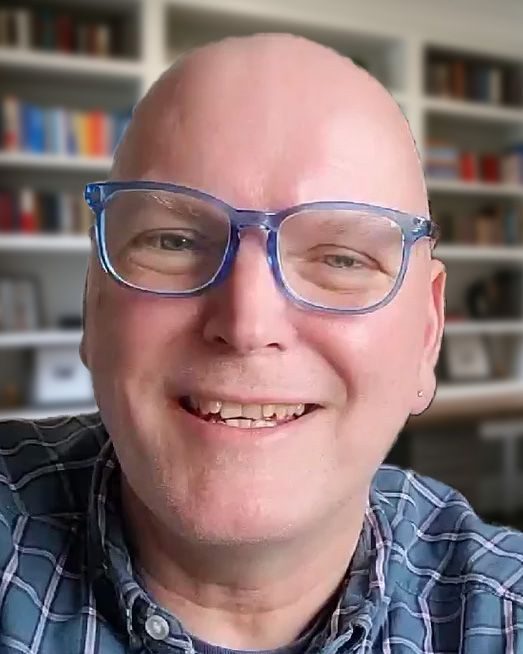Held by Mystery
Spirituality as Secure Attachment in Spiritually Diverse Communities
In a world that often feels fragmented and fast-moving, many of us long for a place to land—a presence that says, “You are safe. You are seen.” For some, that presence is God. For others, it’s Spirit, Love, the Universe, or simply the sacred pulse of life itself. In spiritually diverse communities—where the divine is explored through tradition, experience, scripture, and mystery—this longing is not dismissed. It’s honored.
Attachment Theory and the Sacred
Attachment theory, rooted in the work of John Bowlby, teaches that our earliest relationships shape how we connect, trust, and feel safe. When those early bonds are nurturing, we internalize a sense of worth and security. When they’re fractured, we may carry wounds that echo through adulthood.
But healing is possible—and for many, it begins in the spiritual realm.
Researchers like Pehr Granqvist and Lee Kirkpatrick have explored how people form attachment relationships with the divine. Whether through prayer, meditation, music, or ritual, spiritual connection can offer:
- A safe haven in times of emotional distress
- A secure base from which to explore life’s complexity
- A mirror that reflects back our inherent worth
Michael John Cusick’s Sacred Attachment beautifully explores this dynamic, offering a trauma-informed lens on how divine love can become a healing force in our lives.
The Divine as a Loving Presence
In communities that honor varied spiritual paths, the divine is not confined to a single image or doctrine. It may be experienced as:
- The Christ who walks with the marginalized
- The Spirit that dances in creativity and justice
- The Mystery that holds all things together
- The Love that transcends binaries and borders
This openness allows people to form spiritual attachments that feel authentic, healing, and deeply personal.
Spiritual Attachment Styles
Just as we have human attachment styles, we also carry spiritual ones. These influence how we relate to the sacred:
- Secure attachment style expresses in faith as trust in divine presence and grace
- Anxious style expresses in faith as fear of abandonment
- Avoidant style expresses in faith as skepticism or detachment from spiritual practices
- Disorganized style expresses in faith as conflicted or traumatic spiritual history
Spiritually diverse communities often create space for all of these—welcoming the doubter, the seeker, the wounded, and the mystic alike.
Healing Through Sacred Connection
In a church where music ranges from Taizé chants to indie folk, where sermons quote both scripture and poetry, and where the divine is spoken of with reverence and curiosity, healing happens. People begin to feel held—not just by community, but by something deeper.
Spiritual practices like contemplative prayer, embodied worship, and shared silence can rewire our nervous systems toward trust. Over time, the divine becomes not just an idea, but a felt presence—a secure attachment figure that walks with us through joy, grief, and transformation.
If this reflection resonates, consider sitting with these questions—not to arrive at answers, but to deepen your awareness of how you relate to the sacred:
- What does “being held” by the divine mean to you—and when have you felt it most clearly? Explore moments of spiritual safety, even if they were fleeting.
- How do your early relationships shape the way you seek or resist spiritual connection today? Notice any echoes between attachment and faith.
- What spiritual practices help you feel seen, soothed, or grounded? Consider what brings you closer to a felt sense of presence.
- Is there a part of your spiritual story that feels tender, conflicted, or unfinished? Let this be a space to honor complexity without judgment.
References
Cusick, M. J. (2025). Sacred Attachment: Escaping Spiritual Exhaustion and Trusting in Divine Love. IVP Formatio. InterVarsity Press.
Cherniak, A. D., Mikulincer, M., Shaver, P. R., & Granqvist, P. (2021). Attachment theory and religion. Current Opinion in Psychology, 40, 126–130. APA PsycNet.
Freund, A., Fuchshuber, J., Silani, G., & Unterrainer, H. F. (2024). The relationship between attachment, primary emotions and positive/negative spirituality: a path analysis. Frontiers in Public Health. Frontiers Journal.
Hiebler-Ragger, M., et al. (2016). Facets of Spirituality Diminish the Positive Relationship between Insecure Attachment and Mood Pathology in Young Adults. PLOS ONE. PLOS Journal.

David Bolander, M.Div., M.A., LMHCA (he/him), is a Licensed Mental Health Counselor Associate offering inclusive, attachment-based therapy for adults navigating anxiety, depression, identity exploration, and relational trauma. His approach is warm, emotionally attuned, and grounded in deep respect for each person’s story. As a gay therapist, David is passionate about supporting the LGBTQ+ community and creating spaces of authenticity, belonging, and emotional safety. Drawing from Emotionally Focused Therapy (EFT), psychodynamic theory, and contemplative spirituality, David helps clients explore emotional wounds, trace attachment patterns, and reconnect with their worth. His work is shaped by two decades of leadership in spiritual and community settings, and by a belief that healing is relational, existential, and often sacred. David offers individual and group counseling both in person and online. His professional listings are available on Open Path, Therapy Den, and Psychology Today.












